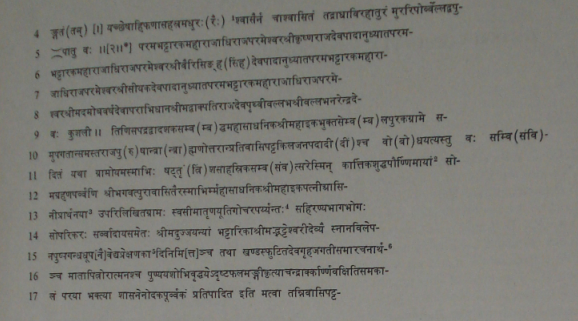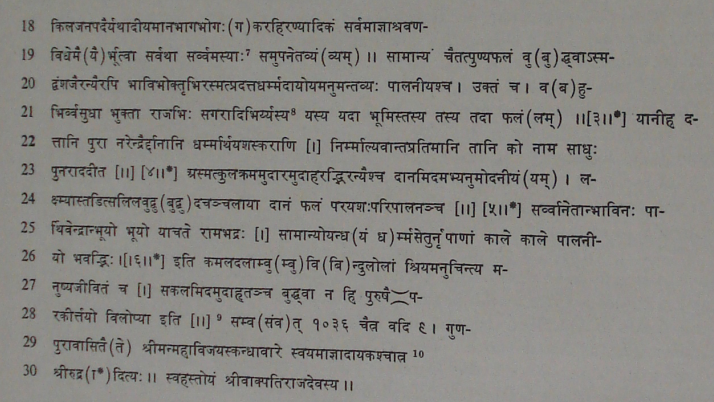| |
North
Indian Inscriptions |
| |
|
|
|
INSCRIPTIONS OF THE PARAMARAS OF MALWA
UJJAIN GRANT OF VĀKPATIRĀJADEVA

Second Plate

____________________________________________________________
[1] Kielhorn: मधुरश्वासैः. Both the corrections as given by him and by me are equally good.
[2] Read either पौर्ण्णमास्यां or पूर्णिमायां.
[3] Sandhi is optional here.
[4] This expression has been variously interpreted. Colebrooke rendered it by “within the proper bounds,
extending to the grass and pasture” (Misc.Essays, Vol. II, p.312); and Kirtane translated it, by “within all its
proper boundaries, which extend as far as the ground for the tending of the cattle and for cutting grass
(Ind. Ant., Vol. VI, p. 53). Referring to both these renderings, Kielhorn translated the expression as “up
to its proper boundaries, the grass and pasture land” (Op. cit., p. 161). The purport of all these renderings
is the same, but all these scholars have failed to catch the meaning of the word यूति,
which means ‘mixing’ or
‘junction’. And thus I would render the expression as ‘extending up to the grass within its
bounds and the
pasture land connected with it.’
[5] This word means ‘shows’ or ‘spectacle’. Possibly प्रो may have been intended.
[6] Kielhorn: “putting in order of the temple buildings, when damaged or out repairs.” I would however,
take it as खण्डशः स्फुटित, partially broken, and also for the construction of जगती,
foundation, or for repairing
the जगती, which was partially broken.
[7] This word appears to be restored to व्प्रस्यै.
[8] Read सगरादिभिः । यस्य-.
[9] Read विलोप्याः ॥७॥ इति.
[10] Read स्वयमाज्ञा । दापकश्चात्र. For translation, see n. on the same in the preceding inscription.
|
\D7
![]()
|









